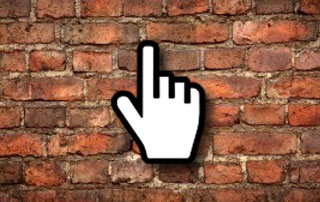In Web design, we often use metaphors from the construction industry to describe the process of developing a website. This is no surprise as the keys to success are very similar whether building a physical storefront (brick & mortar), or an online storefront (click & mortar).
We’ve even adopted some of the same titles and roles. So while it is definitely beneficial to hire highly skilled designers, developers, architects, engineers, and project managers to oversee your construction project, the same adage holds true in both the physical and virtual realms…
If you fail to plan, you’re planning to fail!
Planning is an absolutely critical component to launching a successful web presence. In the words of the world famous architect, Frank Lloyd Wright,
“You can use an eraser on the drafting table or a sledge hammer on the construction site.”
This couldn’t be more true in the web design field. Building a website without planning makes about as much sense as building a house without a door. You’re going to need to redesign it if you want people to visit.
So before you put on your website-building hard hats and break digital ground, put down the blueprint and website design checklist for a moment and consider these questions…
Findability: Can users find it?
Just like your invited house guests, you want your online visitors to be able to easily find your “home on the web”. As I’ve posted previously… Hard to find = Does not exist. Ruthlessly optimize for search engines!
Usability:
Does my site provide users what they want? Does it create any obstacles?
Usability is important both on the web and in everyday life as well. In “The Design of Everyday Things”, user experience guru Donald Norman lists several usability problems caused by lack of planning and bad design. Some of his examples are:
- Doors that open the wrong way
- Faucets that turn the wrong way
- Washing machines with spaceship control panels
My personal pet peeve is the doors, hands down. Have you seen this before? The door handle “design” gives the clue that the door is supposed to be pulled open. However, this convention is not always followed, resulting in people thinking they can’t figure out how to open a door.
In this picture, someone has even placed NEON stickers to show that the action that opens the door is opposite of what the door handle suggests. So, next time you faceplant on some random glass door take comfort in the fact that 1) you’re not alone, and 2) it’s not your fault, it’s just bad usability.
So, if we’ve learned anything from this example, other than to proceed with caution, it is to follow standard web conventions. Make it very obvious what is clickable on your site. If your users can’t find what they are looking for, they will quickly bounce off your site… even faster than the time it takes your face to turn red after running into a door.
